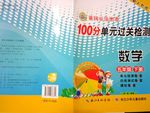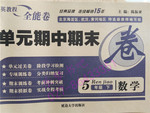题目内容
IV. 阅读理解 (共20小题;每小题2分,满分40分)
阅读下列短文,从每题所给的A、B、C和D项中,选出最佳选项,并在
答题卡上将该项涂黑。
I am a writer. I spend a great deal of my time thinking about the power of language—the way it can evoke (唤起) an emotion, a visual image, a complex idea, or a simple truth. Language is the tool of my trade. And I use them all—all the Englishes I grew up with.
Born into a Chinese family that had recently arrived in California, I’ve been giving more thought to the kind of English my mother speaks. Like others, I have described it to people as “broken” English. But I feel embarrassed to say that. It has always bothered me that I can think of no way to describe it other than “broken”, as if it were damaged and needed to be fixed, as if it lacked a certain wholeness. I’ve heard other terms used, “limited English,” for example. But they seem just as bad, as if everything is limited, including people’s perceptions of the limited English speaker.
I know this for a fact, because when I was growing up, my mother’s “limited” English limited my perception of her. I was ashamed of her English. I believed that her English reflected the quality of what she had to say. That is, because she expressed them imperfectly her thoughts were imperfect. And I had plenty of evidence to support me: the fact that people in department stores, at banks, and at restaurants did not take her seriously, did not give her good service, pretended not to understand her, or even acted as if they did not hear her.
I started writing fiction in 1985. And for reasons I won’t get into today, I began to write stories using all the Englishes I grew up with: the English she used with me, which for lack of a better term might be described as “broken”, and what I imagine to be her translation of her Chinese, her internal language, and for that I sought to preserve the essence, but neither an English nor a Chinese structure: I wanted to catch what language ability tests can never show: her intention, her feelings, the rhythms of her speech and the nature of her thoughts.
41. By saying “Language is the tool of my trade”, the author means that ________.
A. she uses English in foreign trade
B. she is fascinated by languages
C. she works as a translator
D. she is a writer by profession
42. The author used to think of her mother’s English as ________.
A. impolite B. amusing C. imperfect D. practical
43. Which of the following is TRUE according to Paragraph 3?
A. Americans do not understand broken English.
B. The author’s mother was not respected sometimes.
C. The author’ mother had positive influence on her.
D. Broken English always reflects imperfect thoughts.
44. The author gradually realizes her mother’s English is ________.
A. well structured B. in the old style
C. easy to translate D. rich in meaning
45. What is the passage mainly about?
A. The changes of the author’s attitude to her mother’s English.
B. The limitation of the author’s perception of her mother.
C. The author’s misunderstanding of “limited” English.
D. The author’s experiences of using broken English.
【小题1】D
【小题2】C
【小题3】B
【小题4】D
【小题5】A

 智慧课堂密卷100分单元过关检测系列答案
智慧课堂密卷100分单元过关检测系列答案 单元期中期末卷系列答案
单元期中期末卷系列答案IV. 阅读理解:(共20题,每小题2分,共40分)
A long time ago, before there was any money (coins or paper money), people got the things that they needed by trading or exchanging. Salt was one of the first items used to exchange for other items. Later, some of the common things that were used for exchanging were tea leaves, shells, feathers, animal teeth, tobacco, and blankets. Around 3000 BC, barley, a type of grain, was used for exchanging.
The world’s first metal money was developed by the Sumerians who melted silver into small bars all weighing the same. This was around 1000 BC. About three hundred years later, people started using coins as official money.
Around 640 BC, people in the ancient kingdom of Lydia ( which was in Turkey) created special coins of exact with and purity (纯度). They were made of gold and silver and were stamped with a lion’s head.
Later, other empires such as Greece, Persia, and Rome adopted the concept of coins and started developing their own in many different shapes and different metals.
Around the year 1000, the Chinese started using paper money. The Chinese were the first to use paper money. The Europeans discovered this thanks to Marco Polo who went to China in 1295. the Chinese had different values for the paper notes which were made by the Chinese government.
Around 1661, Sweden became the first European country to make paper money. Until 1850, the Spanish dollar was the coin most widely used throughout the world.
1What is the best title for this passage?
|
A. |
The history of money |
|
B. |
How people traded in the past |
|
C. |
The invention of paper money |
|
D. |
The use of coins around the world |
2We learn that before coins and paper money were used, _____.
|
A. |
barley had always been used for exchanging |
|
B. |
only a few people knew how to trade with others |
|
C. |
salt was the most widely used item for exchanging |
|
D. |
many kinds of things were used for exchanging |
3According to the passage, when did people start using coins as official money?
|
A. |
Around 1300 BC. |
B. |
Around 1000 BC. |
|
C. |
Around 700 BC. |
D. |
Around 640 BC. |
4The underlined word “adopted” in Paragraph 4 probably means “____”.
|
A. |
replaced |
B. |
changed |
|
C. |
accepted |
D. |
invented |
5. Which of the following countries first started to use paper money?
A. Spain B. China C. Sweden D. Lydia
 et can help to save money. Some useful websites include www.Travelocity.com. www.bargains-lowestfare.cm and www.Ecoomictravel.co
et can help to save money. Some useful websites include www.Travelocity.com. www.bargains-lowestfare.cm and www.Ecoomictravel.co  o your homework
o your homework